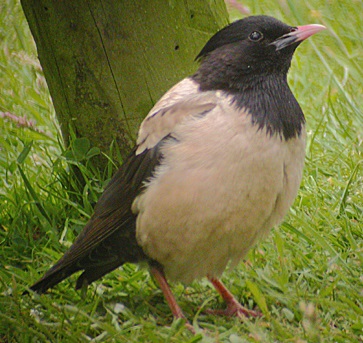- Home
- FAQs
- Customer Video Gallery
- Customer Photo Gallery
- Bird Facts
- Bird Food Blog
- Bird Information
- Feeding Advice
- Small Animal Information
- A to Z of Guinea Pigs
- A to Z of Hamsters
- A to Z of Rabbits
- Basic Care for Guinea Pigs
- Basic Care for Hamsters
- Basic Care for Rabbits
- Basic care for Chinchillas
- Basic care for Ferrets
- Basic care for Gerbils
- Basic care for Mice
- Basic care for Rats
- Buying a Healthy Small Animal
- Does your Reptile need a Licence
- Equipment for Ferrets
- Equipment for Hamsters
- Equipment for Mice
- Equipment for your Chinchilla
- Equipment for your Gerbil
- Equipment for your Guinea Pig
- Equipment for your Rabbit
- Keeping a House Rabbit
- Dog Information
- Cat Information
- Customer Information
- Fat Balls
- Suet Pellets
- Straights
- Seed Mixes
- Suet Treats
- Mealworms
- Bird Feeders
- My Account
Something Exotic
Date: 2013-10-24 12:58:15 | Category: Bird Watching | Author: Neill Hunt
October is THE month in the bird watching calendar that most rare birds turn up. Migration is well on the way, with birds from all continents moving to wintering grounds further afield. Occasionally the poor little fellas take a wrong turn and end up lost, sometimes here in the UK.Many of these rare birds turn up at predictable bird watching hotspots, Spurn Point in Humberside, Isles of Scilly off Cornwall, Fair Isle, Shetland and so on. Every year rare birds turn up and every year an army of Twitchers go chasing them.
Some species are more regular than others and some are so extremely rare that they truly provide a once in a lifetime opportunity to see them on British soil, these particular birds are called Megas!
One of the more predictable rarities to turn up on an annual basis is the Rose Coloured Starling, as well as turning up at the above mentioned sites, the Rose Coloured Starling has a habit of turning up in any County and normally in gardens with feeding stations.

They are easy to identify, similar in size to our Common Starling but the plumage on the body of the bird is pink! The head, wings and tail are glossy black and the bill is also pink. Cracker!
The young birds aren't quite so pretty and have gained a rather unfortunate nick name amongst birders...Pinkstinks!
The young are a little more like our young Common Starling but they are so much paler brown with distinctive dark wings and pale bill.
I've seen many of these birds over the years, at bird tables in Lancashire, Yorkshire, Norfolk, Cornwall, Dorset, Lincolnshire to name but a few......looking through the rarity archives they have turned up in nearly every British County, so, look out for them, you never know what can turn up at a well stocked bird table. Once they've found a food source they can be quite protective and territorial over it. A bit of a bully! The favourite bird table food of these birds is undeniably Fatballs, they love 'em!
Make sure your feeders are stocked, fat feasts ready, fatballs out and seed mixes spread... there may just be an exotic starling winging its way to your garden as you read this!
What is amazing about these birds is how regularly they turn up and how far they've travelled considering the nearest breeding location is as far away as far eastern Europe, not only that they winter in India and Asia!
PS. If you do find one on your feeders, please, please...let us know!




